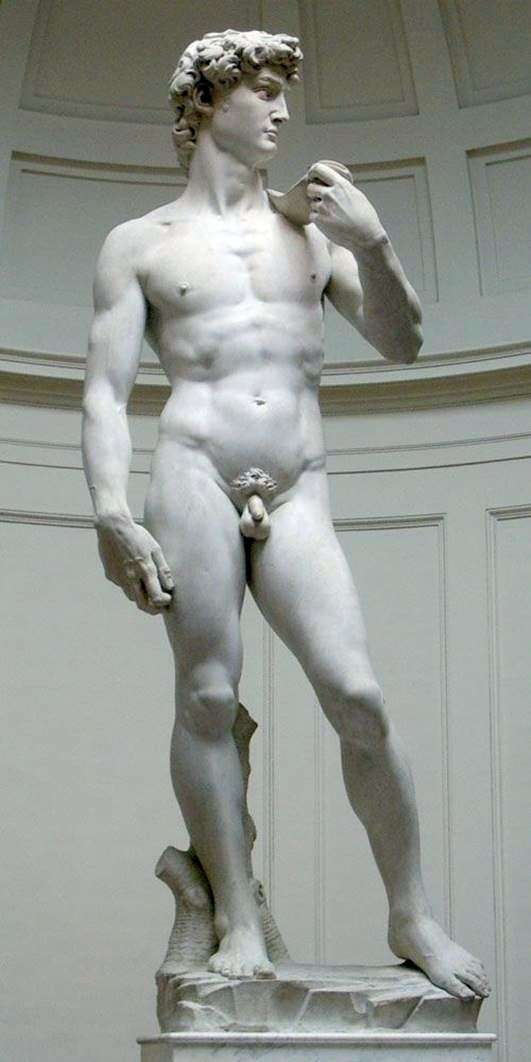
Sculpture of Michelangelo “David”. The height of the sculpture is 547 cm, marble. In 1501, Michelangelo returned to Florence. Here he boldly takes on the execution of a colossal statue of David from a huge block of marble, on which one unsuccessful sculptor had already worked at one time and, as everyone thought, hopelessly spoiled it.
Despite the unusual scale of the sculpture and the difficulties caused by the shape of the stone block, Michelangelo coped brilliantly with the task. The elaboration of the conditions of the order for this statue and the discussion of its installation were carried out with the participation of officials of the Republic of Florence, representatives of workshops and prominent artists, and the opening of the monument in 1504 turned into a national celebration. This fact testifies to the fact that contemporaries were already aware of the great social significance of this work – it was not for nothing that architect Giuliano da Sangallo directly called the statue of David a public monument. Suffice it to recall the famous statues of the young David by Donatello and Verrocchio, to see how far the monumental plastic of the High Renaissance went from the 15th century sculpture.
Unlike his predecessors, Michelangelo portrayed David before committing the feat. The young man’s beautiful face is full of anger, his eyes are staring menacingly at the enemy, his hand is squeezing the sling. The gigantic size of the statue, unprecedented in Renaissance sculpture, is inextricably linked with one of the main qualities of the heroic image in the art of High Renaissance, for the first time with such clarity expressed in this work, the image of a person acquires a truly titanic character.
In accordance with this, the predominant side in the content of “David” is the pathos of heroic action. The image of the winner of Goliath acquires a broader meaning – it is the personification of the unlimited power of a free man; David’s youthful courage grows into an unshakable confidence in a person’s ability to overcome any obstacles. In the sculpture “David” Michelangelo first appeared a new feature of the internal characteristic – an unprecedented concentration of volitional tension until now, which imparts to the hero’s image a formidable, frightening force, which contemporaries designated by the word terribilita.
The Florentines themselves, according to Vasari, were aware of the civic meaning of “David” installed in front of Palazzo Vecchio – the building of the city government – as a call for the courageous defense of the city and its fair management. The artistic language of the sculpture “David” is distinguished by clarity and simplicity: an expressive silhouette, a clear outline, clear articulations, the absence of contradictory elements in the interpretation of movement and in sculptural modeling – everything serves the most distinct expression of the basis of the image – concentrated purposeful will.
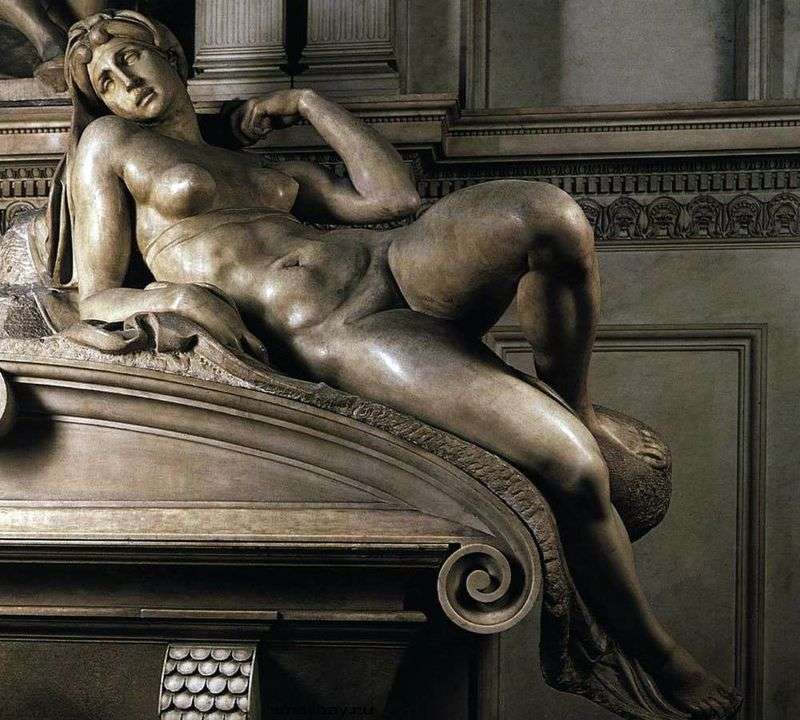 Morning (sculpture) by Michelangelo Buonarroti
Morning (sculpture) by Michelangelo Buonarroti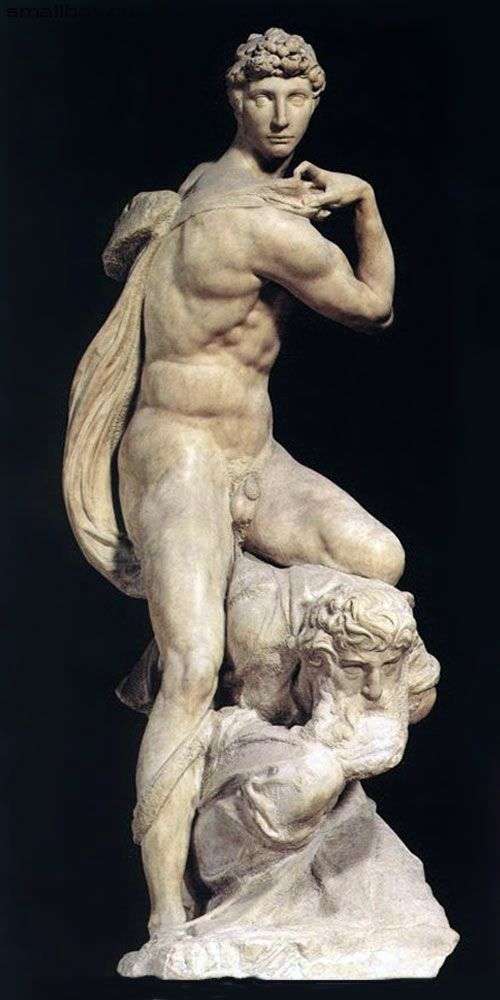 Victory (sculpture) by Michelangelo Buonarroti
Victory (sculpture) by Michelangelo Buonarroti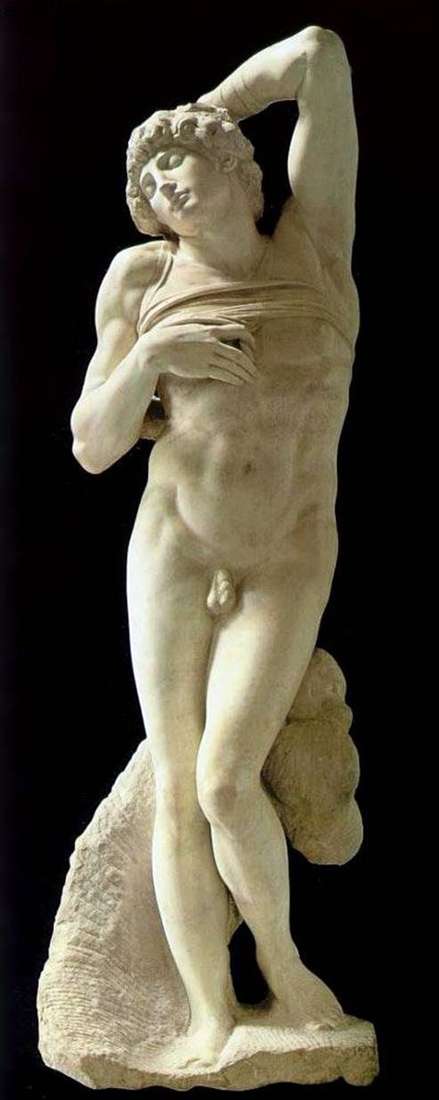 The Dying Slave by Michelangelo Buonarroti
The Dying Slave by Michelangelo Buonarroti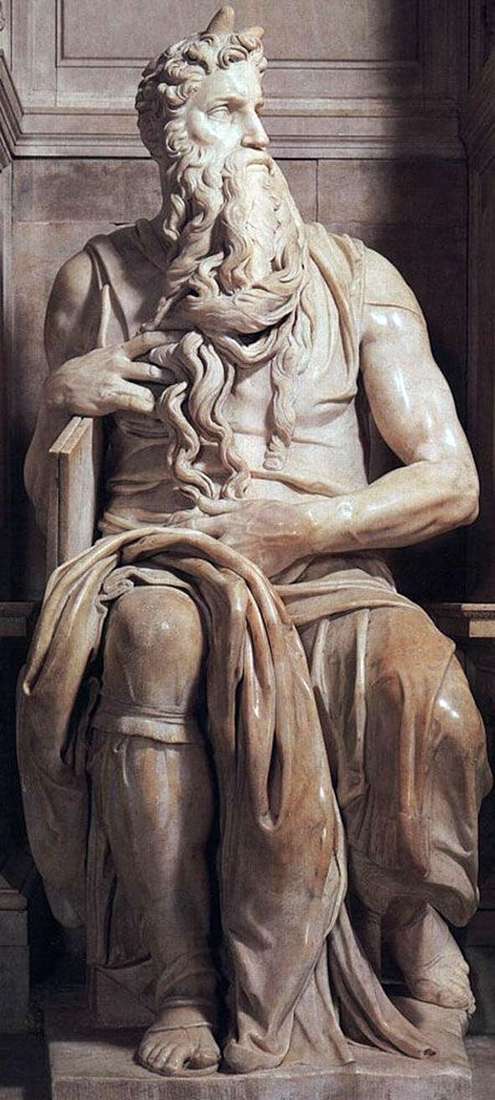 Moses (sculpture) by Michelangelo Buonarroti
Moses (sculpture) by Michelangelo Buonarroti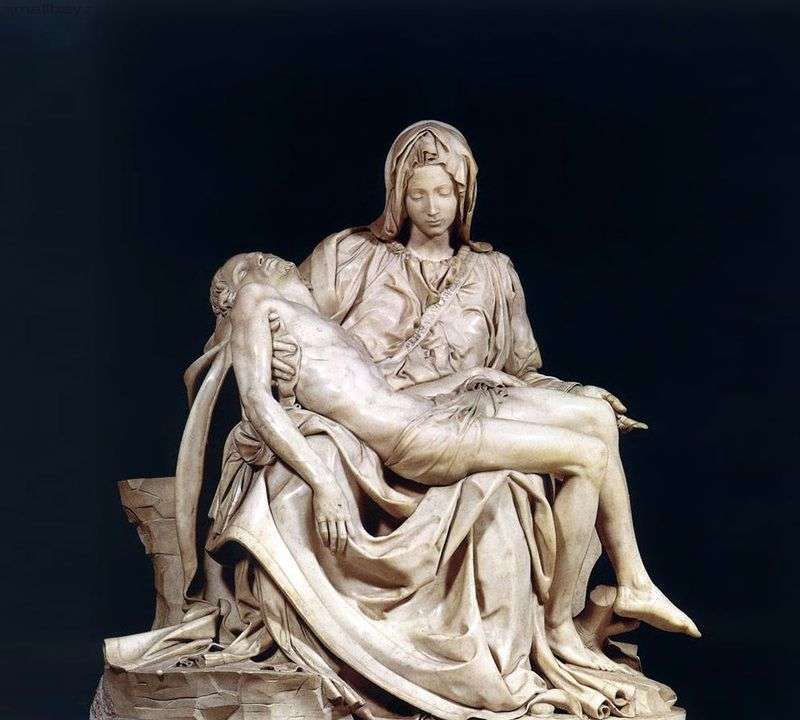 Pieta (sculpture) by Michelangelo Buonarroti
Pieta (sculpture) by Michelangelo Buonarroti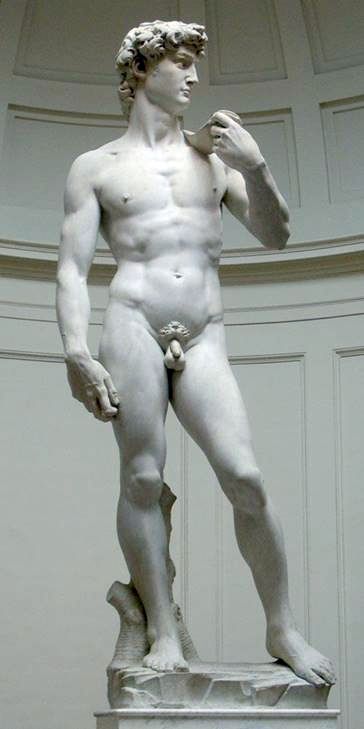 David – Michelangelo Buonarroti
David – Michelangelo Buonarroti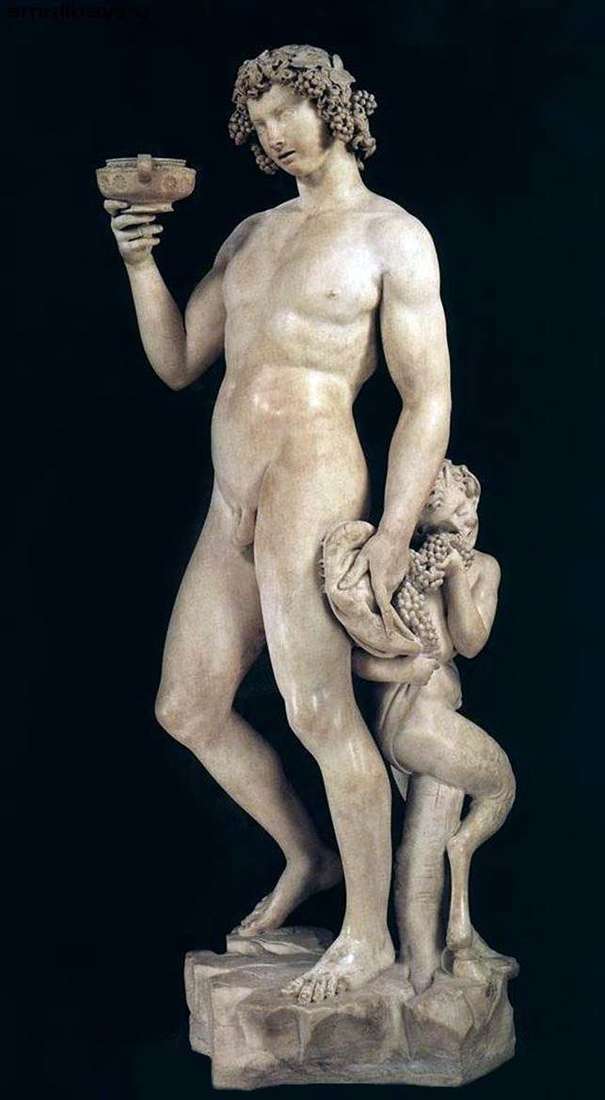 Bacchus (sculpture) by Michelangelo Buonarroti
Bacchus (sculpture) by Michelangelo Buonarroti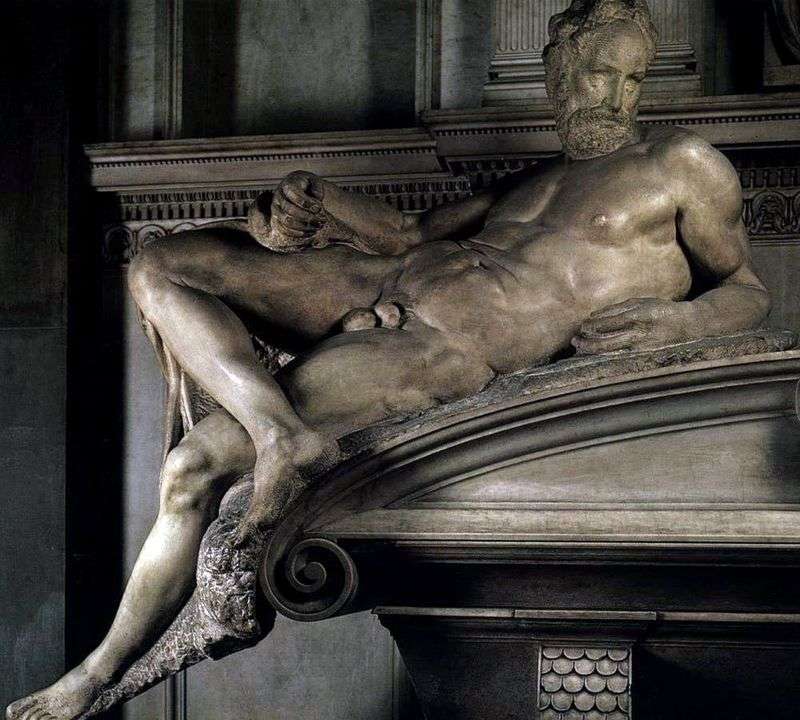 Evening (sculpture) by Michelangelo Buonarroti
Evening (sculpture) by Michelangelo Buonarroti